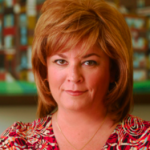
Diane Ginsburg, M.S., FASHP
I WRITE THIS COLUMN having just returned from an incredibly energizing, exciting Pharmacy Practice Model Initiative (PPMI) Summit in Dallas. Pharmacy thought leaders from across the country came together to reach consensus on how we, as hospital and health-system pharmacists, should be practicing our profession in the future.
Summit attendees looked at a number of overarching principles for future pharmacy practice models and came to an agreement on the following principles:
• We, as pharmacists, must move closer to the patient.
• The role of a qualified technician workforce and the use of technology must be greatly expanded.
• Pharmacy departments are accountable for the development and implementation of medication-use policy to ensure safe and effective use of medications.
• Pharmacists are accountable for patient outcomes.
As Billy Woodward urged, we need to “be bold and be urgent” in our work to enact practice change. We need to embrace our common commitment to our patients and be accountable for their positive outcomes.
Stay tuned in the months and years ahead as the Pharmacy Practice Model Initiative gains momentum. As a tangible outcome of the Summit, we envision that every pharmacy department in the country will be engaged in examining how it deploys its resources. It’s a truly exciting time to practice pharmacy!
InterSections is a great place to catch a glimpse of some of the most innovative practice models happening today. Our cover story (page 8), about the enhanced role for educated, trained, and certified pharmacy technicians, shows just how important this segment of the pharmacy workforce is. As pharmacists move into direct patient-care roles, we’ll need to rely more and more on our professional technician partners.
Also in this issue, you’ll find a story on exciting work being done in the prevention of venous thromboembolism (VTE). Pharmacists in five hospitals around the country are being mentored in cutting-edge VTE practices through an ASHP Advantage program called Stop VTE. This interprofessional initiative is designed to increase the rate of thromboprophylaxis in hospitalized patients and promote the safe use of anticoagulants.
As the country continues to struggle under the weight of an economic downturn, pharmacyschool graduates are beginning to feel the pinch. The story on page 12 focuses on the strategic choices that recent graduates and new practitioners are facing regarding how and where to practice pharmacy.
Finally, ASHP’s recent Drug Shortages Summit highlighted an unfortunate trend in medicine today. Drug shortages cause significant disruptions in patient care, including canceled or delayed medical treatments and procedures. They also lead to adverse events caused by medications that may have the potential for greater harm than the first-line therapy that is unavailable due to a shortage. In the story on page 14, read about how pharmacists are stepping into this gap, coming up with processes and approaches that minimize risks to the patient.I hope you’ll be informed and inspired by what you find in this issue of ASHP InterSections!
Diane Ginsburg, M.S., FASHP





 If you want to contribute tutorials, news or other stuff please contact us. We pay 150 for each approved article.
If you want to contribute tutorials, news or other stuff please contact us. We pay 150 for each approved article. Consectetur adipisicing elit. Sed do eiusmod tempor incididunt ut labore.
Consectetur adipisicing elit. Sed do eiusmod tempor incididunt ut labore. This site uses valid HTML and CSS. All content Copyright © 2010 Newscast, Inc
This site uses valid HTML and CSS. All content Copyright © 2010 Newscast, Inc If you like what we do, please don't hestitate and subscribe to our
If you like what we do, please don't hestitate and subscribe to our